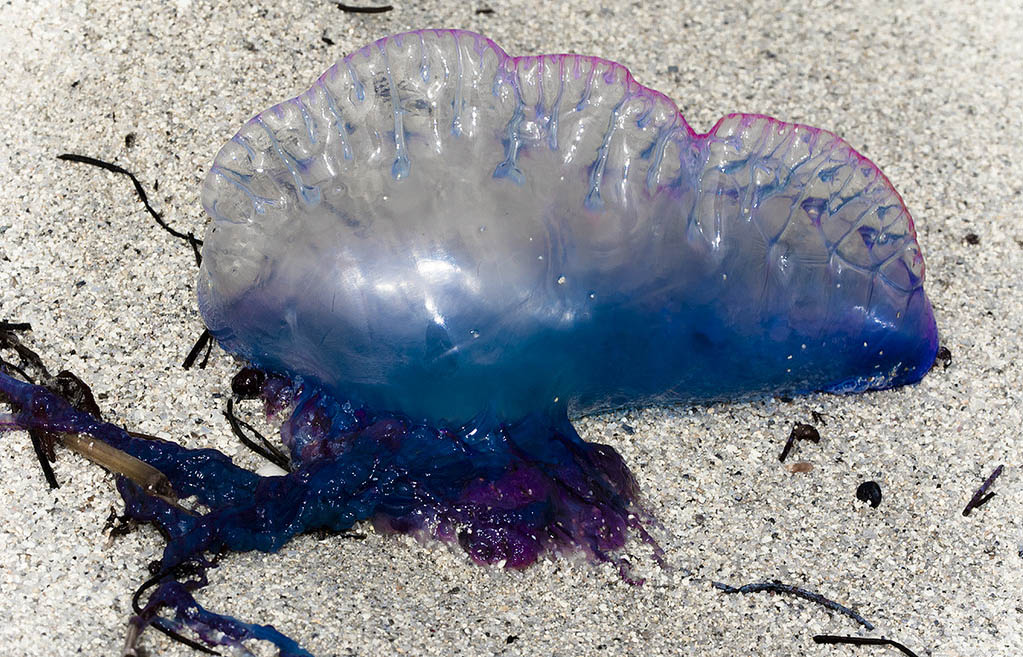Poisonous jellyfish plagues, called Portuguese caravels, otherwise known as Portuguese Man-of-War have reached the beaches surrounding Alicante, after being carried by the current from Cádiz and Huelva, where they usually have their breeding areas.
Beachgoers found several specimens in different parts of San Juan beach during Saturday and did not hesitate to remove them from the water.
Miguel Segovia says that he was playing with his brother and his friends when he saw one of them, still alive, having been washed up onto the beach. Another was reported by a lifesaver who said that, during the middle of the afternoon he was carrying out activities in the area close to the Cabo de las Huertas, when he found another that was alive in the sea. He took it out so as to prevent it stinging bathers and people who were walking along the shore.
Juan Guillén, biologist at the Institute of Coastal Ecology, said that the Portuguese caravel is characterized by its phosphorescent colour, with tentacles of up to 30 meters long. He said that protocol requires the raising of the red flag raised until they disappear. They are rare in the Mediterranean and it has its habitat in the warm waters of all the world’s oceans, it is more usual to see it in the Atlantic.
The Portuguese man-of-war has 10 times more venom than a normal jellyfish. Its bite is very painful, it causes vomiting, fever, paralysis, nausea, and it can leave scars.
The Benidorm lifeguard department say that they too have taken 14 Portuguese caravels from the beaches in recent weeks.
Guillen urged caution to bathers or athletes who surf or swim in open water. “The only good thing about these jellyfish is that they are easily seen, but bathers who go out into the sea alone should know the risk that they are taking, and be very careful, because they can cause paralysis of a limb which could also cause drowning.”
According to the biologist, “we know that they are appearing in Calpe, Benidorm and San Juan at the moment and I am sure that we will also see them very soon on the southern beaches. They come from the area of Huelva and Cádiz where the authorities have already closed a number of beaches. “





